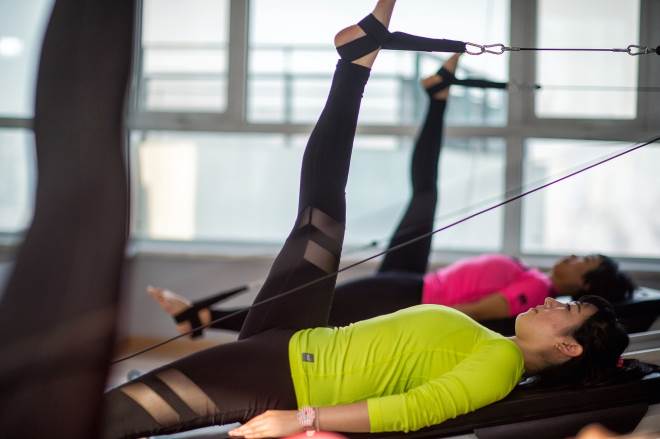Sweatless Fitness: The Rise of Isometric Exercise
In a world obsessed with high-intensity workouts and sweat-drenched gym sessions, a quiet revolution is taking place in the fitness industry. Isometric exercise, a form of strength training that involves holding static positions without moving joints or muscles, is gaining popularity among fitness enthusiasts and professionals alike. This ancient practice, rooted in centuries-old traditions, is now being rediscovered and reimagined for modern lifestyles. As more people seek efficient, low-impact ways to improve their fitness, isometric exercise offers a unique blend of accessibility, effectiveness, and versatility. From its historical origins to its current applications in physical therapy and elite athletics, isometric training is proving that sometimes, the most powerful movements are the ones we don't make at all.

The modern resurgence of isometric exercise can be traced back to the early 20th century. Physical culturists and strongmen began to recognize the value of static contractions in building strength. One notable figure was Alexander Zass, a Russian strongman who developed his incredible strength while imprisoned during World War I. Unable to move freely, he practiced pulling against his chains and pushing against the walls of his cell, essentially performing isometric exercises.
The Science Behind Static Strength
Isometric exercise works by engaging muscles without changing their length or the angle of the associated joints. This static contraction leads to several physiological adaptations that contribute to increased strength and muscle endurance. When a muscle is held in a fixed position under tension, it recruits a high percentage of motor units, leading to neural adaptations that improve strength even without significant muscle hypertrophy.
Research has shown that isometric training can be particularly effective for improving tendon strength and joint stability. A study published in the Journal of Applied Physiology found that isometric exercises led to significant increases in tendon stiffness, which can enhance force transmission and reduce the risk of injury. Additionally, isometric contractions have been shown to improve blood pressure regulation and cardiovascular health, making them valuable for individuals with hypertension or those recovering from cardiac events.
Isometrics in Physical Therapy and Rehabilitation
The gentle nature of isometric exercises makes them an invaluable tool in physical therapy and rehabilitation settings. For patients recovering from injuries or surgeries, isometric contractions offer a safe way to maintain muscle strength and prevent atrophy without putting undue stress on healing tissues. This is particularly useful in cases where range of motion is limited or when pain prohibits dynamic movements.
Isometric exercises are commonly employed in the treatment of conditions such as tendinopathies, where they have been shown to reduce pain and improve function. A landmark study published in the British Journal of Sports Medicine demonstrated that heavy isometric contractions could provide immediate pain relief in patients with patellar tendinopathy, a condition that had previously been challenging to treat effectively.
Integrating Isometrics into Modern Fitness Routines
As the fitness industry continues to evolve, isometric training is finding its place in a variety of workout styles and programs. Many popular fitness trends, such as Pilates and certain forms of yoga, incorporate isometric holds as key components of their routines. These static contractions not only build strength but also improve body awareness and control, making them valuable for enhancing overall athletic performance.
Fitness professionals are now designing entire workouts around isometric principles, creating challenging and effective routines that require little to no equipment. These “no-move” workouts are particularly appealing to those with limited space or time, as they can be performed anywhere and require no special gear. From wall sits and planks to more advanced poses like the “hollow body hold,” isometric exercises offer a full-body workout that can be scaled to any fitness level.
The Mind-Body Connection in Isometric Training
One of the most intriguing aspects of isometric exercise is its potential to enhance the mind-body connection. The intense focus required to maintain static positions for extended periods can lead to improvements in proprioception, balance, and overall body awareness. This heightened sense of physical control can translate to better performance in various athletic endeavors and daily activities.
Moreover, the meditative quality of holding isometric poses can have significant mental health benefits. Studies have shown that practices incorporating isometric elements, such as yoga and Tai Chi, can reduce stress, anxiety, and depression. The combination of physical challenge and mental focus required in isometric training creates a unique opportunity for mindfulness practice, allowing practitioners to cultivate a sense of calm and presence even in the face of physical discomfort.
The Future of Sweatless Fitness
As our understanding of exercise physiology continues to advance, the role of isometric training in fitness and health is likely to expand. Researchers are exploring new applications for isometric exercise, from its potential in managing chronic pain conditions to its use in preventing age-related muscle loss. The development of smart technology and wearable devices may soon allow for more precise measurement and prescription of isometric training, tailoring programs to individual needs and goals.
The growing interest in low-impact, efficient exercise modalities suggests that isometric training will continue to gain popularity. As more people seek ways to incorporate fitness into their busy lives without the need for extensive equipment or gym memberships, the simplicity and effectiveness of isometric exercises make them an attractive option. From office workers looking to counteract the effects of prolonged sitting to elite athletes fine-tuning their performance, isometric training offers a versatile and powerful tool for achieving diverse fitness goals.
In conclusion, the resurgence of isometric exercise represents a significant shift in our approach to fitness and strength training. By harnessing the power of static contractions, we are rediscovering an ancient practice that offers modern solutions to many of our current health and fitness challenges. As we continue to explore the potential of sweatless fitness, isometric exercise stands poised to play a central role in shaping the future of physical wellness and performance optimization.




